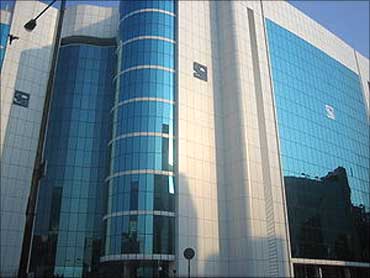 | « Back to article | Print this article |
What you MUST look for in stock portfolios
However, he must choose the cost structure - fixed or variable.
A fixed-cost structure charges a specific percentage fee on the total assets under management on a quarterly basis, amounting to about 2.5 -3 per cent annually.
On the other hand, a variable cost structure is linked to the portfolio's performance or the profits generated in a financial year.
Click NEXT to read more...
What you MUST look for in stock portfolios
Despite this, Rao is veering towards the variable cost structure. Reason: He wouldn't have to dole out a high fee if his portfolio is not generating good returns.
An added incentive comes with the Securities and Exchange Board of India making it mandatory for fund managers to use the high watermarking principle while calculating variable costs.
Click NEXT to read more...
What you MUST look for in stock portfolios
Understand with an illustration: Say you invest Rs. 10 lakh and this amount increases to Rs. 13 lakh in the first year. The portfolio manager will share profits worth 10-20 per cent.
Industry officials say that Sebi has only provided a broad principle for the calculation of the watermark.
Fund managers have the flexibility of calculating the same after deducting the fixed fee and the profits taken by the portfolio manager, or, after deducting the fixed fee only.
Click NEXT to read more...
What you MUST look for in stock portfolios
Deducting the fixed fee component before calculating the watermark is a common practice. However, the fund manager's share in profits is usually not deducted. For instance, say your investment of Rs. 10 lakh rises to Rs. 13 lakh.
A fixed fee of Rs. 10,000 is deducted. Now, your portfolio value is Rs. 12.9 lakh.
Since the profit-sharing is done on the entire profit of Rs. 2.9 lakh, your watermark should be Rs. 12.9 lakh, and not after the share of the PMS provider is taken out.
Click NEXT to read more...
What you MUST look for in stock portfolios
"Implementing the high watermark principle ensures that you do not pay twice for the profit generated on your portfolio. So, if the value of your portfolio gets eroded, you will only pay the management fee," adds Venkatasubramanium.
Amar Pandit, CEO, My Financial Advisor says: "In bullish markets, when there is a year-on-year rise in the portfolio value, the fixed cost structure will work out cheaper as you don't have to share a high percentage of your profits."
That said, Rao must make his choice based on his view of the markets. If he wishes to switch in the future, he can easily do so from the next financial year.
Click NEXT to read more...
What you MUST look for in stock portfolios
Mostly, at no extra cost or penalty. However, Jayant Pai, VP, Parag Parikh Financial Services, warns: "With each switch, the watermark will be reset." Say you switch from a variable cost structure to a fixed-cost one. If you want to go back to the former, your previous watermark will not be considered and the fund manager can start with a clean slate.
Irrespective of the option Rao picks, there are some common charges: upfront fee (a one-time flat fee of 1-2 per cent charged at the time of investment, deducted from the overall investment), brokerage charges on buying and selling of stocks (about 50 paise per thousand), service tax (10.3 per cent on the brokerage) and the custodian fee.






